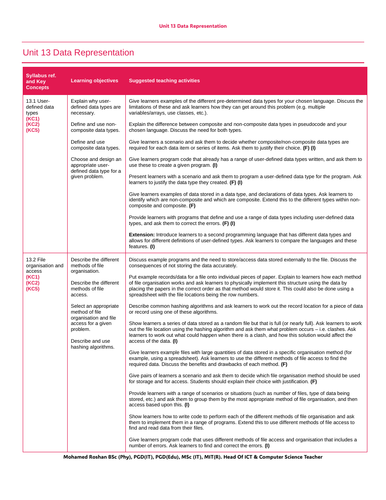

13 Data Representation
13.1 User-defined data types
- Show understanding of why user-defined types are necessary
- Define and use non-composite types Including enumerated, pointer
- Define and use composite data types Including set, record and class/object
- Choose and design an appropriate user-defined data type for a given problem
13.2 File organisation and access - Show understanding of the methods of file organisation and select an appropriate method of file organisation and file access for a given problem
- Show understanding of methods of file access
- Show understanding of hashing algorithms
13.3 Floating-point numbers, representation and manipulation - Describe the format of binary floating-point real numbers
- Convert binary floating-point real numbers into denary and vice versa
- Normalise floating-point numbers
- Show understanding of the consequences of a binary representation only being an approximation to the real number it represents (in certain cases)
- Show understanding that binary representations can give rise to rounding errors
Something went wrong, please try again later.
This resource hasn't been reviewed yet
To ensure quality for our reviews, only customers who have downloaded this resource can review it
Report this resourceto let us know if it violates our terms and conditions.
Our customer service team will review your report and will be in touch.
£0.00